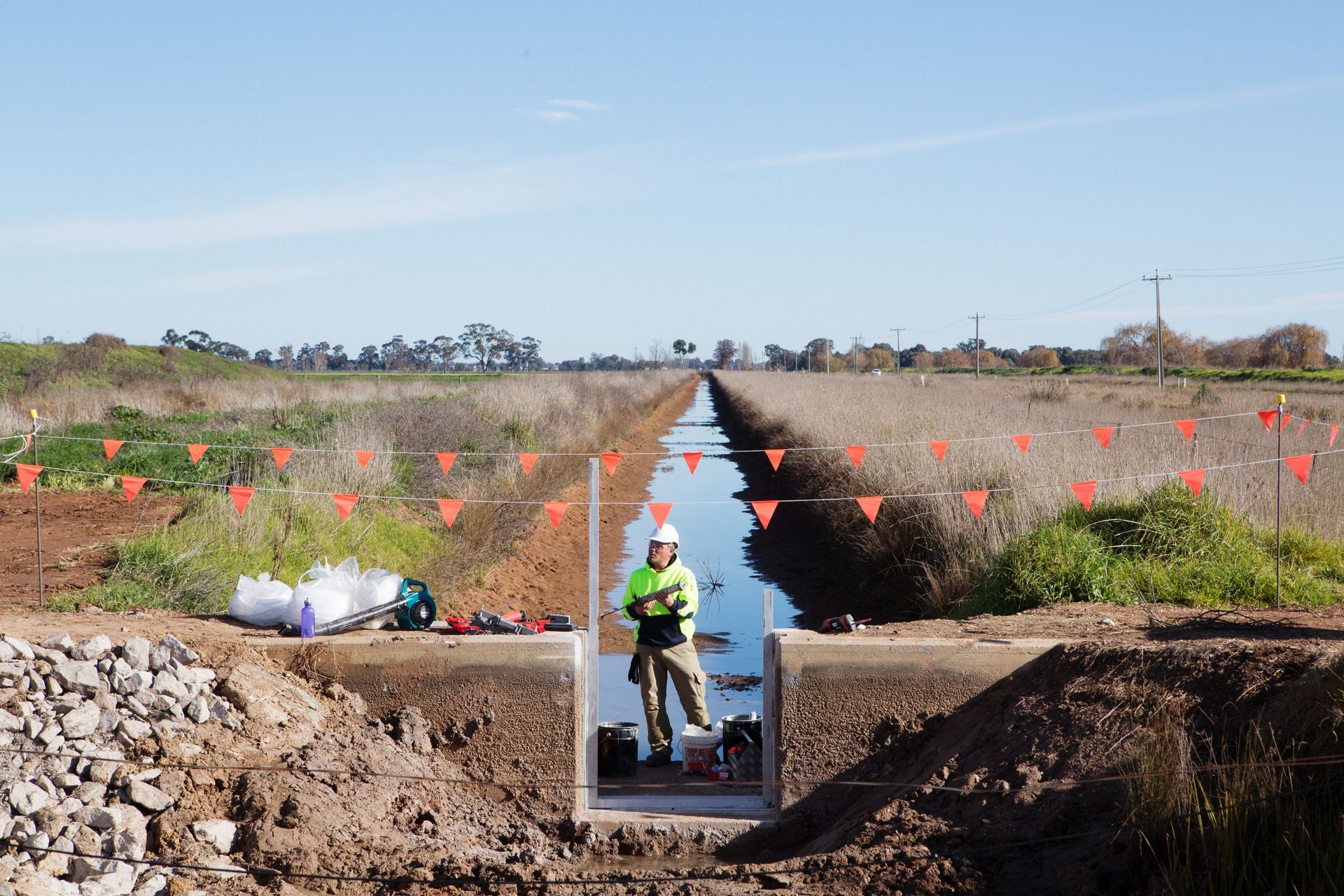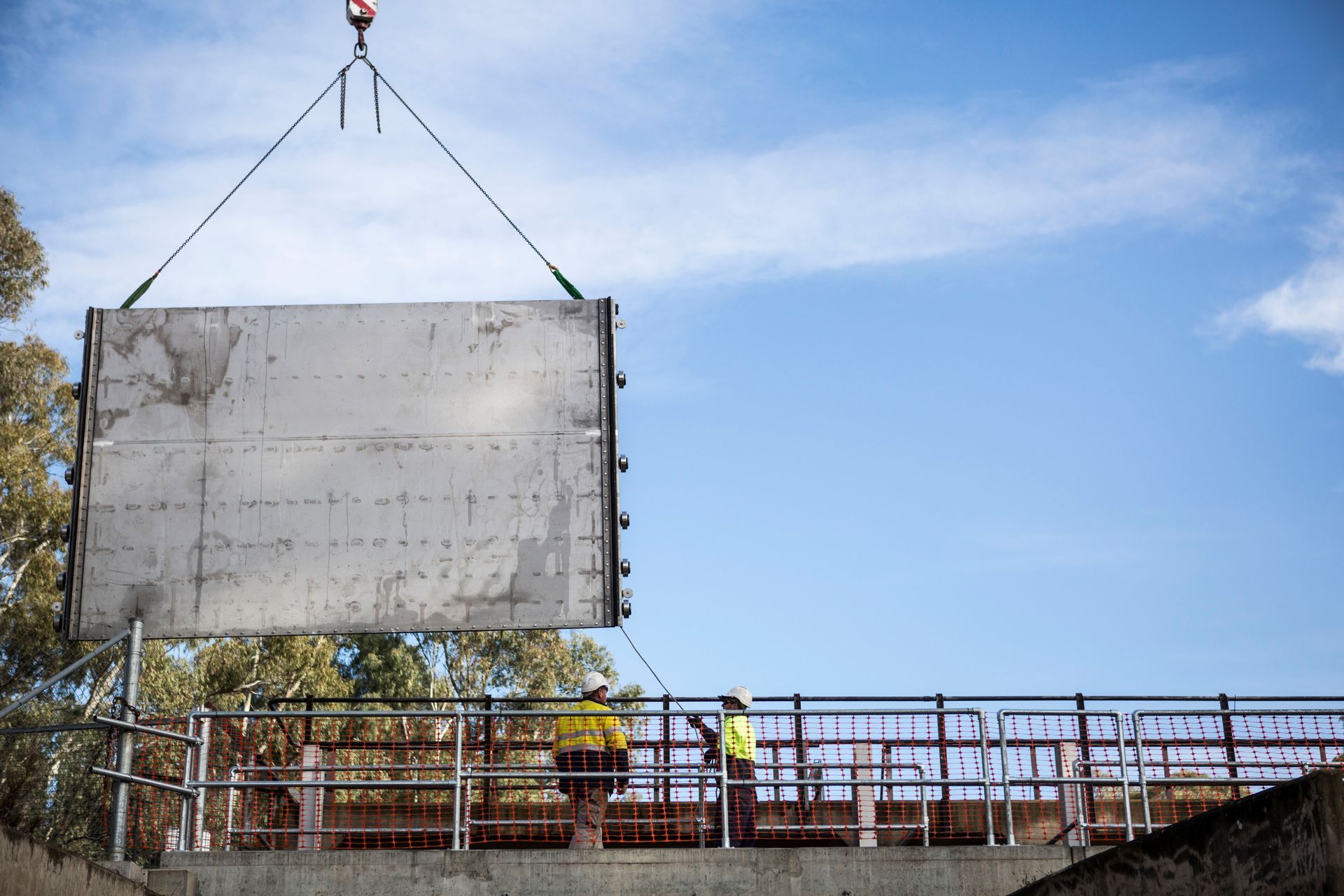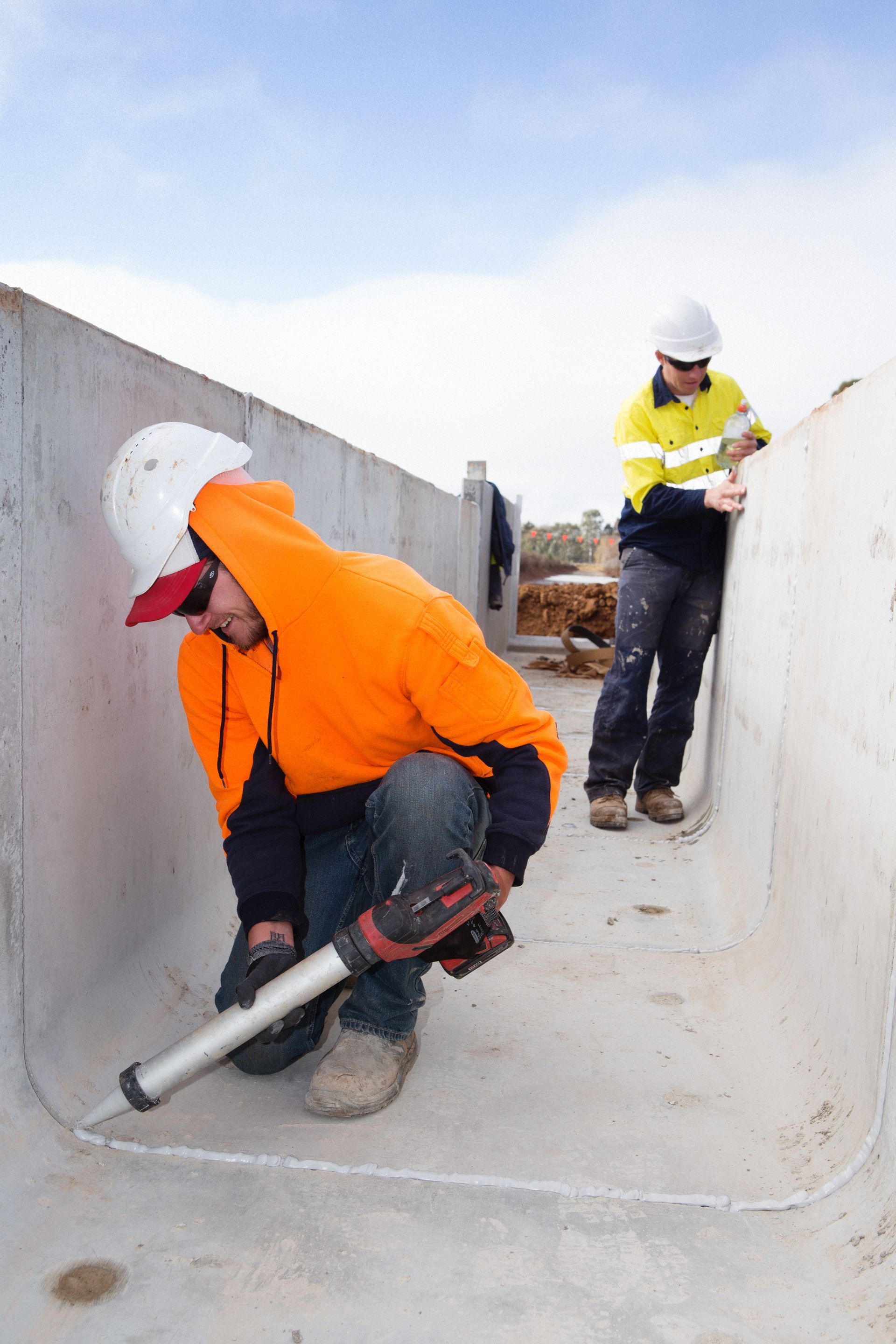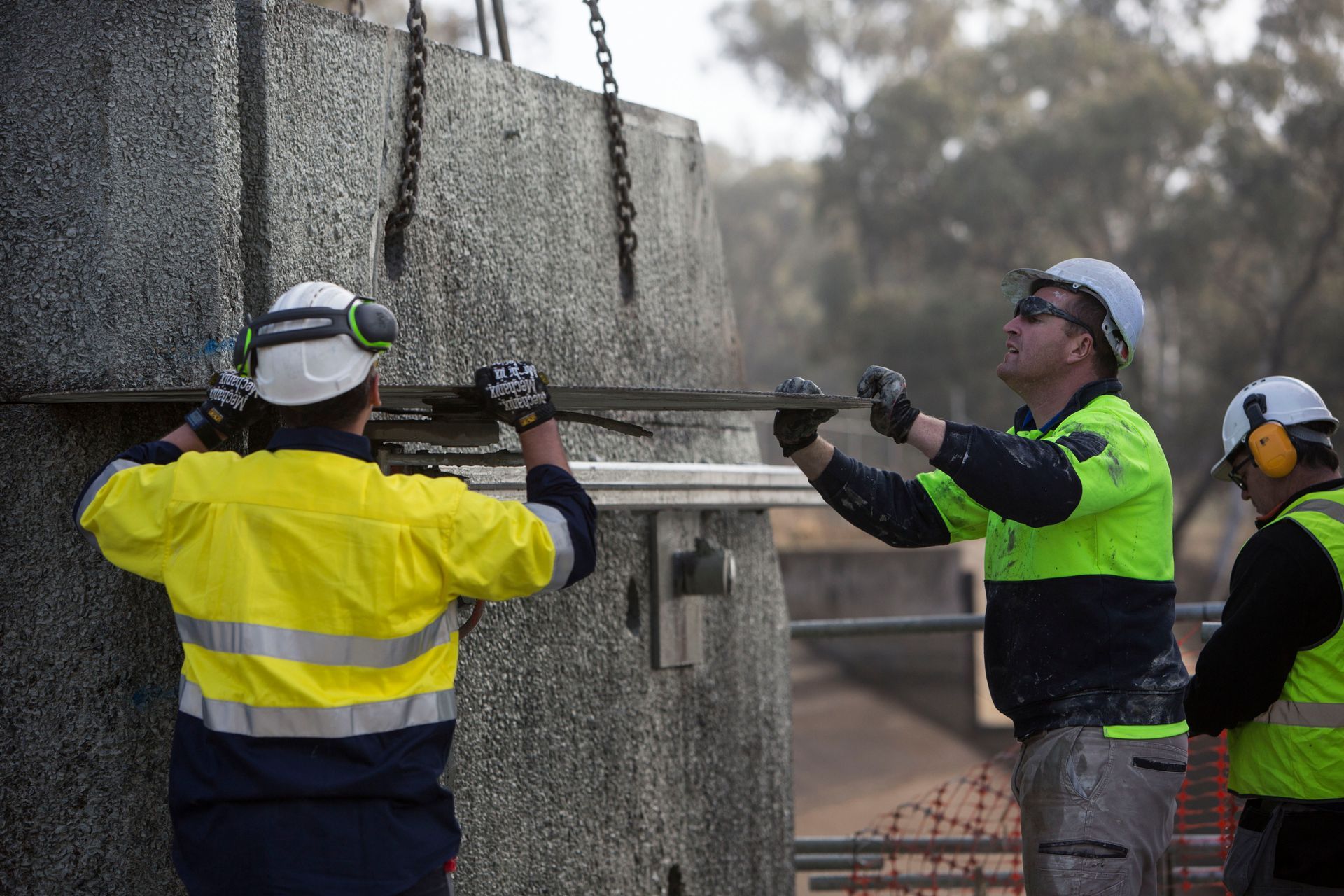30 years of Murray Irrigation feature

18 August 2025
"Once in a lifetime" project heralds monumental change
This year marks 30 years since Murray Irrigation was privatised from a government owned entity, signalling the birth of the company as we know it today. This article, part of a series highlighting important projects and milestones in the company's history, looks at the Private Irrigation Infrastructure Operators Program (PIIOP) which made significant improvements to water delivery efficiency.
It has been called “a generational, if not once in a lifetime project” which brought about monumental change in local irrigation farming.
PIIOP – the Private Irrigation Infrastructure Operators Program – in which Murray Irrigation Ltd (MIL) participated for roughly six years from 2013 to 2019, was the catalyst for the most significant system upgrades since the region’s irrigation scheme began operating in the early to mid-20th century.
The Commonwealth Government spent nearly $300 million across the MIL footprint for two funded projects - known as PIIOP 2 and PIIOP 3. The first of these projects (PIIOP 2) was signed in 2012, with work starting the following year.
In a nutshell, PIIOP was an asset renewal project which involved upgrading ageing infrastructure to benefit MIL customers by improving water delivery service. The focus was on providing customers with infrastructure that would last into the future and support the increased need for efficiency, innovation and resilience.
It was that, and more.

PIIOP has left a lasting legacy that is expected to benefit not only irrigation farmers, but also the broader community, for decades to come.
MIL General Manager Operations, Scott Barlow, was Chief Operating Officer when the company was undertaking PIIOP 3, which ran from 2016 to 2019 and involved expenditure of more than $114 million.
Describing PIIOP as “generational, if not once in a lifetime”, he said, aside from the enormity of the total spend, the two projects injected huge amounts of money into the region and brought skillsets that were often difficult to obtain outside the capital cities.
“Many of the talented staff who worked directly on the projects were retained and still work with MIL or other local companies,” Mr Barlow said.
Importantly, what PIIOP achieved was an efficiency improvement which continues to benefit MIL and its customers; those being the region’s irrigation farmers.
Mr Barlow explained that, prior to PIIOP, the standard farm outlet was capable of delivering up to a maximum of 12 megalitres a day, and adjustments to the outlet flow rate could only be made once a day.
But with more than 2,200 farm outlets upgraded through the PIIOP program, this has increased the standard flow rate to between 15 and 30 megalitres a day. Furthermore, the outlets can now be adjusted twice a day, and only 30 minutes notice prior to the channel run time is required.
“This higher delivery rate has significantly improved water efficiency and productivity on-farm,” Mr Barlow said.
"Channel level fluctuation could not be monitored and rectified in a timely manner as it can since the upgrades, which has led to much more stability in flow rates on to farm.”

It is interesting to look back on how PIIOP eventuated, and what encouraged the Commonwealth Government to make a total investment into the program of more than $850 million across nine private irrigation operators in NSW alone - including MIL.
It is also important to understand that the funding was not just a government hand-out.
PIIOP was funded through the Commonwealth Government’s 'Water for the Future' Program, which had a key focus on promoting water efficiency.
“The program was actually the culmination of several things coming together at the same time,” Mr Barlow said.
“The government was launching programs looking to fund infrastructure upgrades in return for entitlements associated with water savings.
"There was a growing realisation that on-farm productivity could be significantly assisted by increasing flow rates and flow adjustment intervals, and there was increasing speculation that improved and accurate water metering would be legislated into organisations such as MIL.
“The latter never materialised to the extent the assumption was first based on. However incremental change through evolving and increasing reporting obligations, as well as greater public scrutiny and expectation since the program’s completion, means Murray Irrigation is well placed to defend its operating protocols in this space.”
PIIOP 2, which secured a Commonwealth Government allocation of $169.2 million, concentrated on construction of regulators and outlets, installation of telemetry system upgrades and reconfiguring infrastructure to reduce or change how landholders connect to the system.
There was also a sub-system retirement project, which involved strategic voluntary retirement of landholdings from the MIL area of operations by disconnecting them from the system.
Funding was provided to enable these landholders to convert to dryland farming and to assist with the installation of an alternate stock and domestic water supply. Under the project, landholders transferred their water entitlements to the Commonwealth and terminated their delivery entitlements and associated shares in MIL. In total, 29 landholdings participated in this part of the project.
PIIOP 3, using funding of $114.8 million, was more focused on some of MIL’s major assets and included improvements to the Mulwala Canal, Lawson Syphons, the Berrigan Canal and the Edward River Escape.
These upgrades have extended the life of these assets and enabled improved system control, while allowing MIL to harvest rain water events. The project has enabled strategic draining and Winter watering periods, which means more water put to better use for the region.

The efficiencies generated through PIIOP even attracted international attention, with delegations inspecting the works as they were being undertaken to learn more about world’s best practice in irrigation.
“The completion of PIIOP 2 and 3 effectively means the non-earthen water delivery network has been upgraded during refurbishment,” Mr Barlow said.
“The improvements in the water delivery service levels to customers has significantly improved on-farm productivity.
“The company can continue to annually provide industry leading delivery efficiency standards which help contribute to the overall revenue generation and value proposition of the region.”

In his final report on PIIOP 3, Mr Barlow explained:
Our participation in the PIIOP program has set us up as one of the most efficient gravity-fed irrigation systems in Australia. Murray Irrigation now prides itself on safely delivering fast and reliable water to its customers, which combines the benefits of modern technology with innovative infrastructure which provides a comparatively low-cost, highly reliable service.
Thanks to PIIOP, MIL customers enjoy assets with an extended life which control flows and water levels to allow for greater operational flexibility and efficiency.
The PIIOP 3 Report executive summary perhaps explains it most succinctly:
Overall, a complete package of works that provide a sense of achievement, pride and demonstrated water savings to all parties involved; including our community, contractors, suppliers, directors and government officials.
Indeed, a "once in a lifetime" project that will benefit farmers, as well as the community which relies on their productivity, for generations to come.

